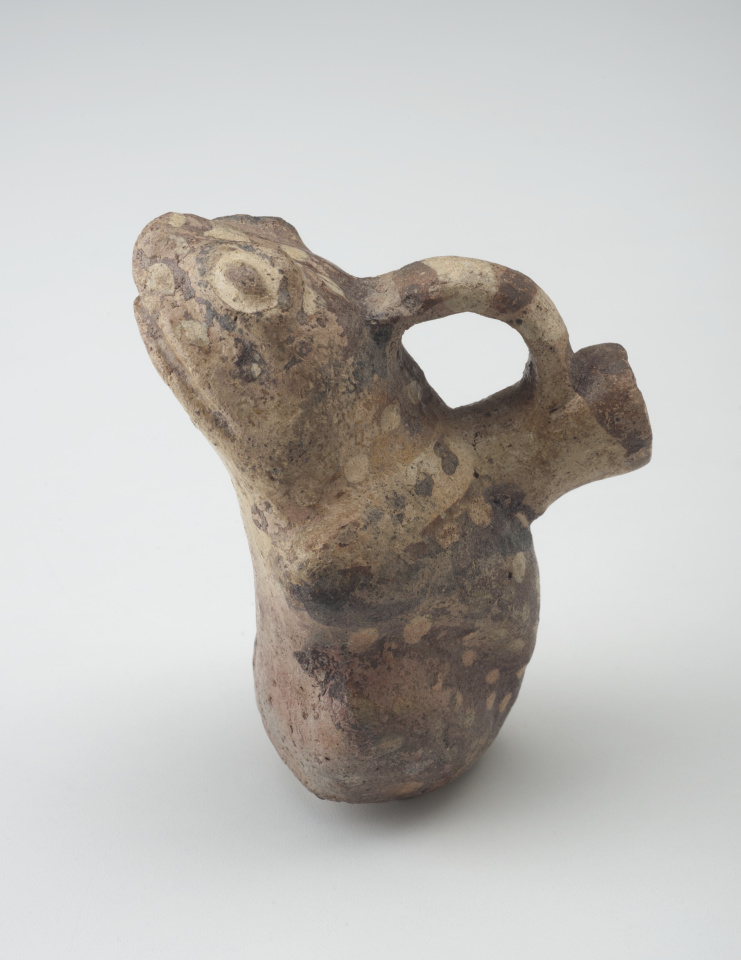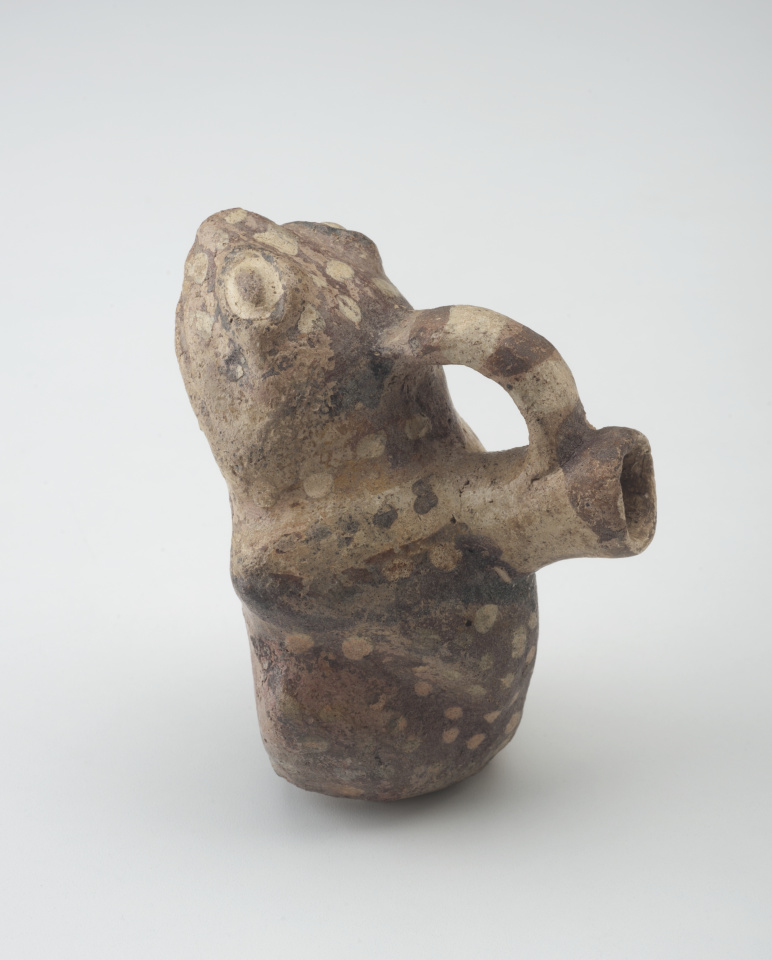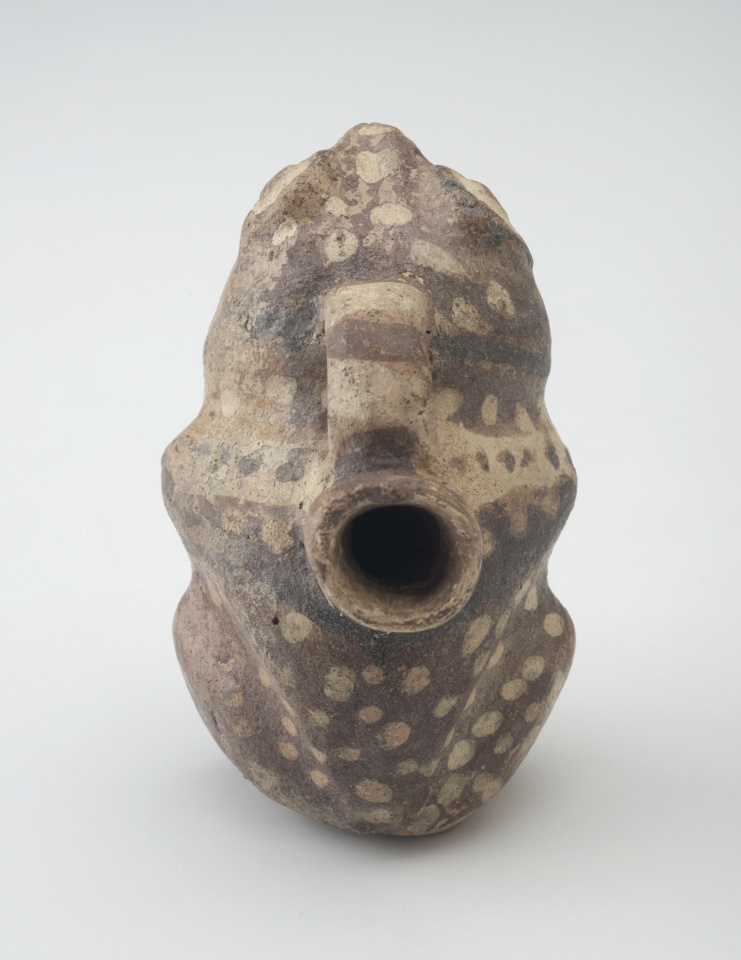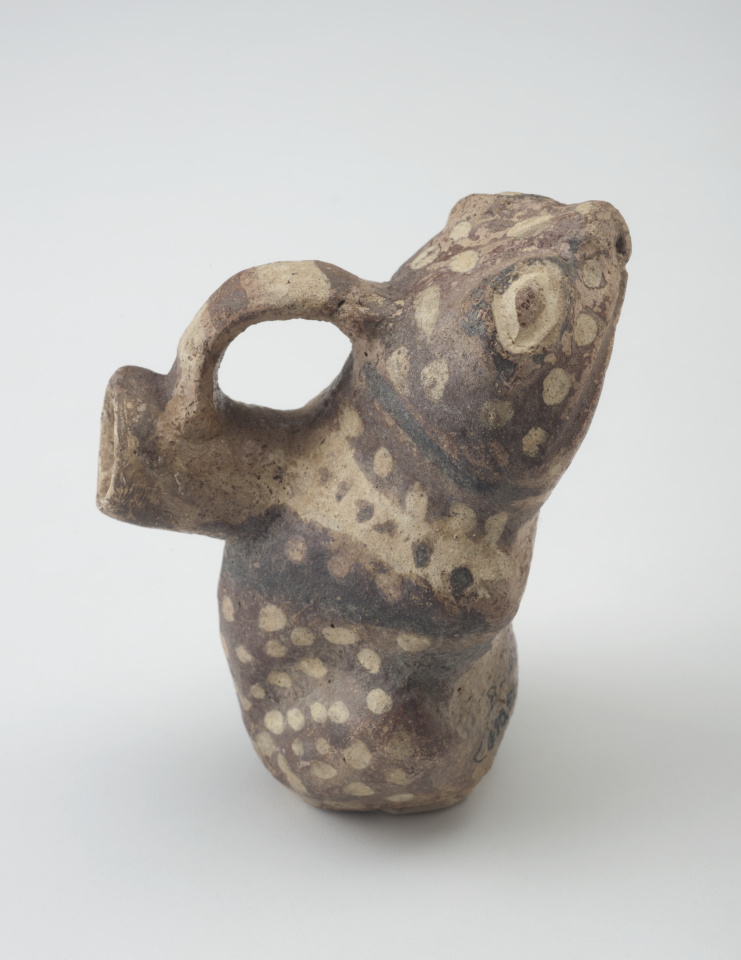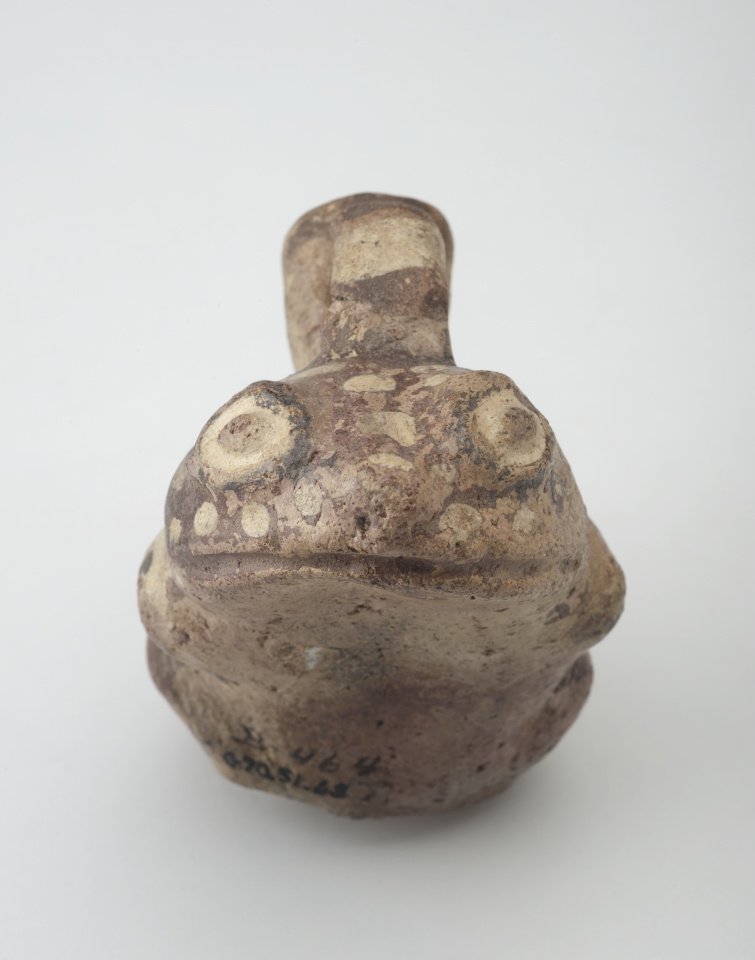Bottle (work of art)
Artwork Info
About
Key Ideas
- This vessel is shaped like a frog, with a handle running from the top of the frog’s head to the spout located on the frog’s back. It is painted with black, yellow, brown, and red paint. The artist used lines and dots of paint to imitate the bumps on a frog’s back.
- The dots on its back and chin may represent the markings of a Marañon poison frog. This type of frog is native to the region surrounding the Marañon River in Peru and has been used for its healing properties for hundreds of years.
- Ancient Andean people believed that frogs were linked to water and that frogs brought rain to their crops.
Learn More
The body of this frog-shaped vessel is sculpted in a crouched position, with a handle and spout on its back. It is decorated with black, yellow, brown, and red paint, and its surface features horizontal black lines to represent the frog’s bumpy skin. The dots on its back and chin may represent the markings on a Marañon poison frog, whose name comes from the toxic chemicals it secretes and then uses as a weapon against predators. The powerful substance secreted by poison dart frogs has also been used as medicine. Poison frogs usually live in the rainforest, near rivers and lakes. Today the Marañon poison frog is considered an endangered species due to the destruction of its natural habitat.
Ancient Andean people believed that frogs were linked to water because the croaking sound they make imitates the sound of raindrops falling. Frogs were also believed to bring rain, an essential element of survival for agricultural societies.
Additional Resources
Resources for Teachers:
- Read an article about Chancay pottery at Museo Larco.
- Learn how tropical frogs get their colors.
- Read more about the Marañón Poison Frog.
Resources for Students:
- Read an article to learn interesting facts about the Andes Mountains.
- Learn more about poison dart frogs.
- Listen to NCMA Curator Ángel González López talk with staff at the NC Zoo about frogs.

